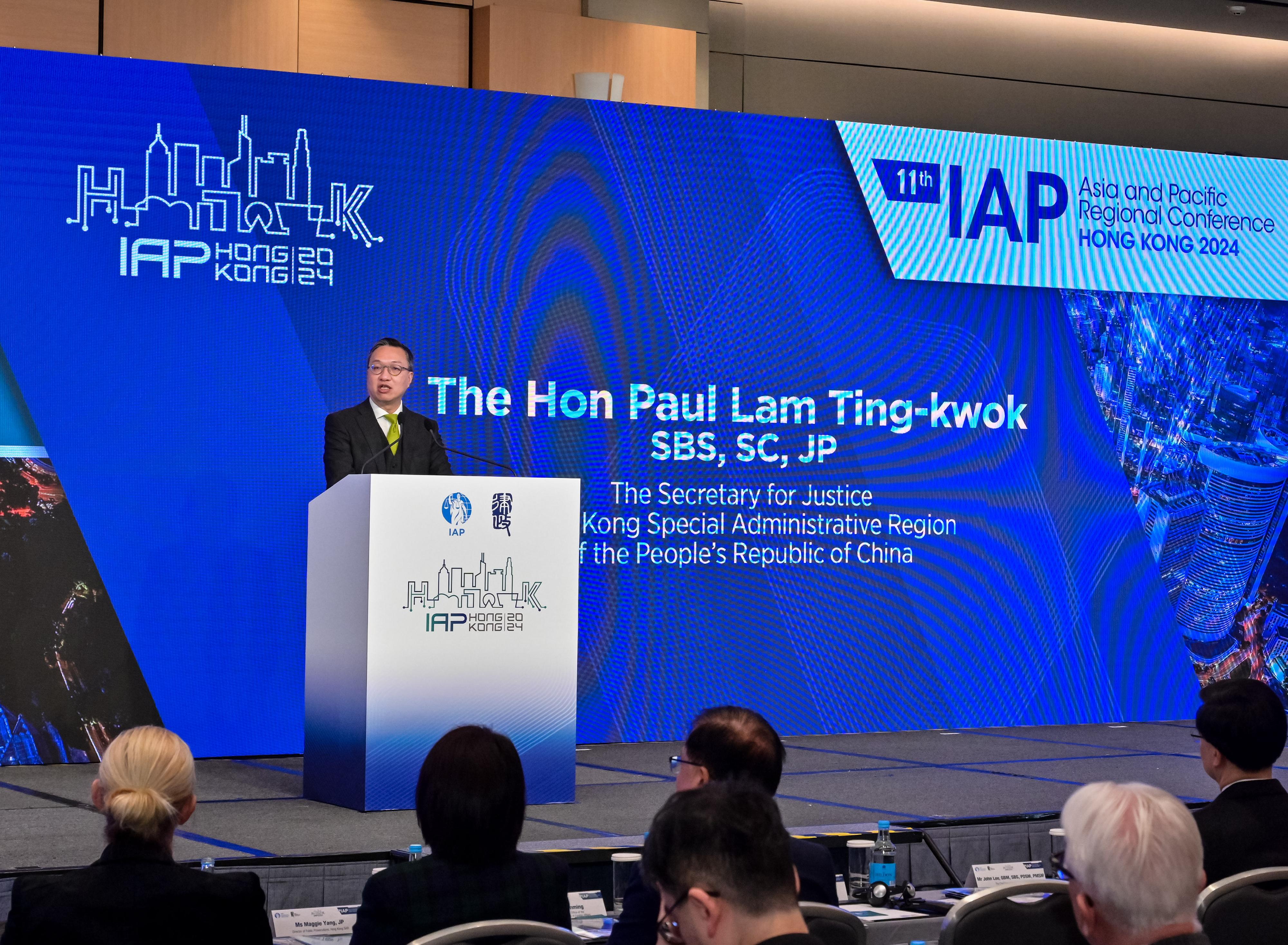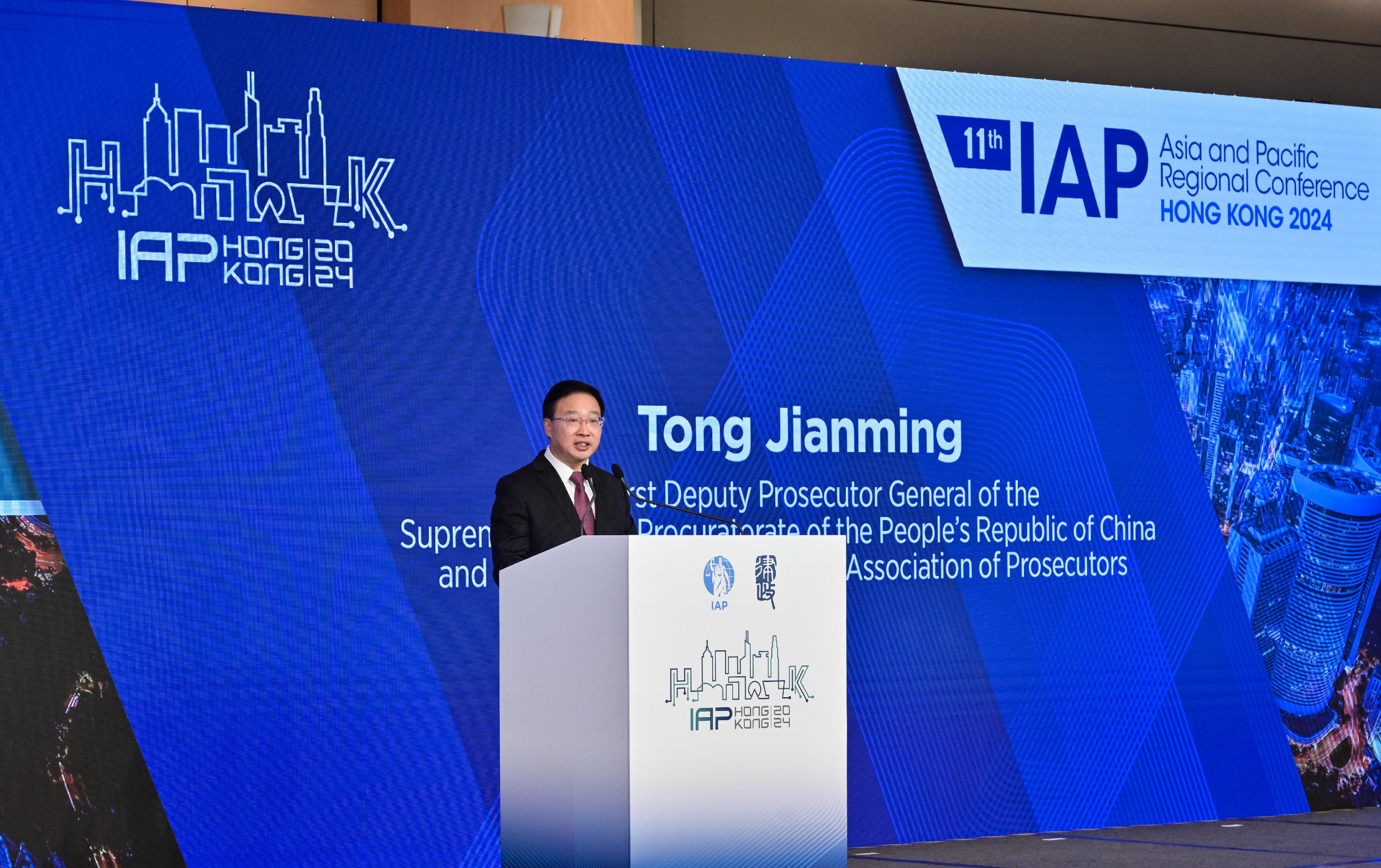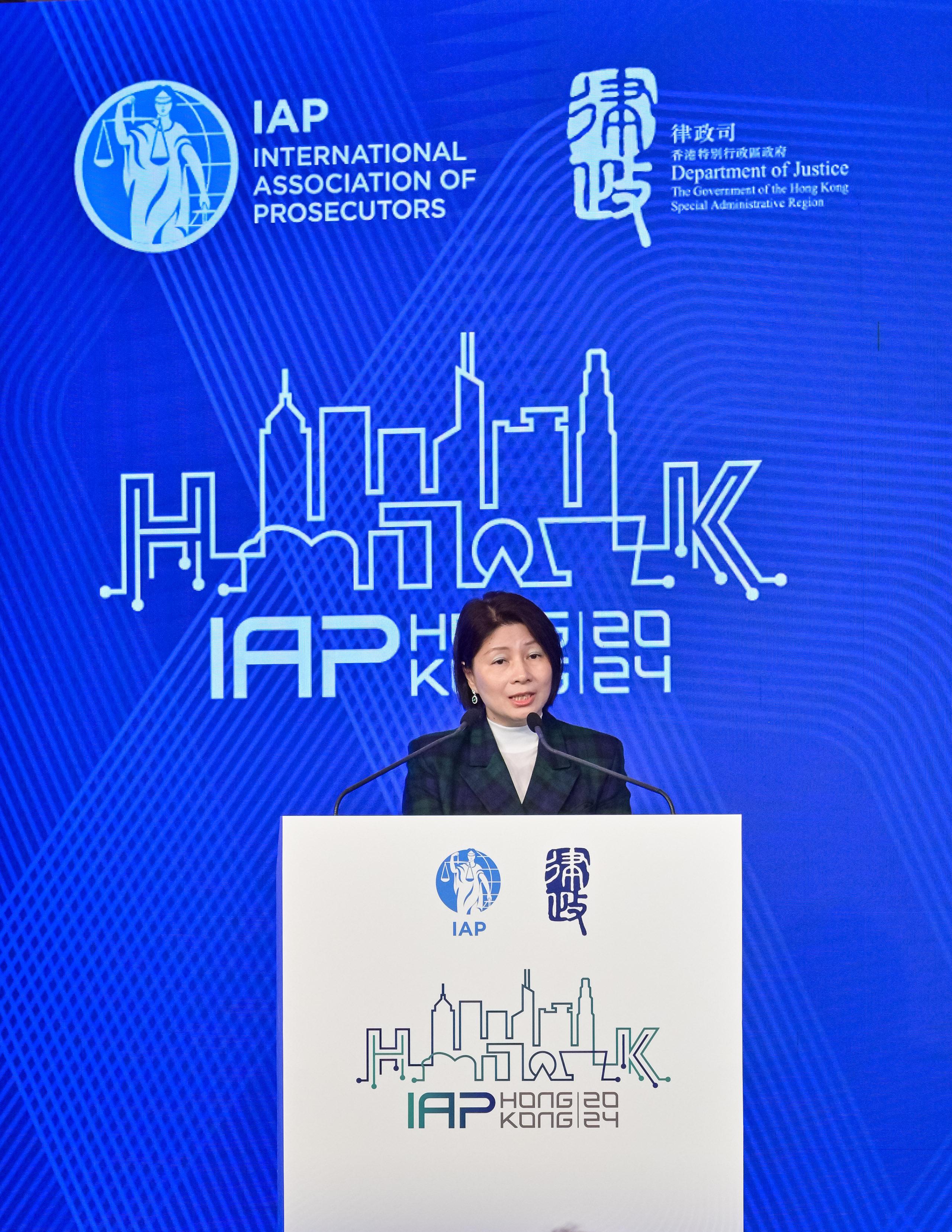11th Asia and Pacific Regional Conference of the International Association of Prosecutors commences in Hong Kong (with photos)
The 11th Asia and Pacific Regional Conference of the International Association of Prosecutors (IAP), co-hosted by the IAP and the Department of Justice, officially commenced today (November 28) in Hong Kong, gathering around 240 participants, including local and overseas esteemed guests, senior government officials, legal professionals and experts, for the opening ceremony.
The three-day conference, with related programmes starting yesterday, is themed “Effective Prosecution Service in the Technological Age” and has drawn about 140 participants from around 30 jurisdictions, underscoring the global commitment to combating technology crimes. The conference aims to address the challenges posed by the rapid evolution of technology in criminal activities and to enhance the ability of prosecutors to advance evidence against such criminals.
The Chief Executive, Mr John Lee; the Secretary for Justice, Mr Paul Lam, SC; and the First Deputy Prosecutor General of the Supreme People’s Procuratorate of the People’s Republic of China, Class One Grand Prosecutor and Vice-President of the IAP, Mr Tong Jianming, delivered their welcome speeches today at the opening ceremony, marking the beginning of a series of discussions and exchanges focused on strengthening international efforts against technology-related crimes. The keynote speech was delivered by the Director of Public Prosecutions, Ms Maggie Yang.
Hong Kong previously held the IAP Regional Conference in 2004, and subsequently the Annual Conference and General Meeting in 2007. Nearly two decades later, Hong Kong continues to commit to combating crimes under its common law system preserved by the “one country, two systems” principle. As new technologies have emerged in recent years, the world is facing unprecedented challenges posed by technology crimes. The conference provides participants with an opportunity to share knowledge and experiences to stay ahead of cybercriminals and enhance prosecutorial capabilities.
The conference will cover a range of pertinent topics, including the challenges posed by decentralisation in the technological age, the handling of digital evidence, and the impact of technological advancements on criminal evidence and procedure today and tomorrow (November 29). Prosecutors at home and abroad will have the opportunity to exchange views and best practices, fostering a united and determined front against technology crime.





